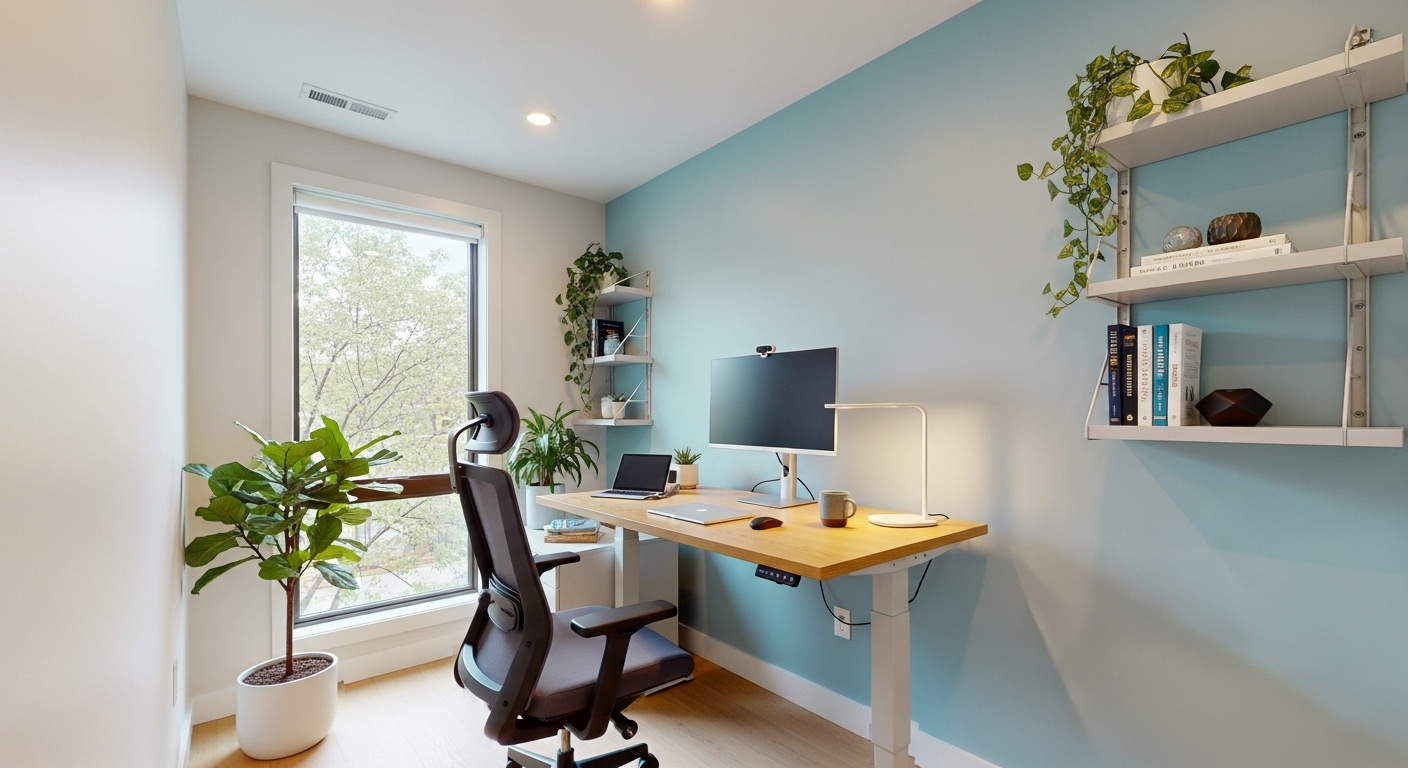The modern professional is increasingly untethered from the traditional office, embracing the flexibility and community of coworking spaces. These environments hum with an infectious energy, offering networking opportunities and a vibrant atmosphere that can stimulate creativity. However, this same energy can quickly morph into a sea of distractions, threatening deep work and derailing focus. The key to thriving is not to flee the buzz, but to harness it. Achieving peak performance in a shared workspace isn’t about luck; it’s about design. This article provides a comprehensive blueprint for structuring your day, creating personal boundaries, and strategically utilizing the unique environment of a coworking space. We will explore actionable techniques, from architecting a personal focus bubble to leveraging the community intentionally, transforming your flexible office from a potential challenge into your greatest productivity asset. By implementing a deliberate framework, you can master your workflow and achieve consistent, high-impact results.
The coworking duality: channeling energy, not distraction
Coworking spaces operate on a fundamental duality: they are simultaneously hubs of collective energy and potential vortexes of distraction. On one hand, the ambient hum of keyboards, quiet conversations, and the simple presence of other focused individuals can create a powerful sense of momentum known as social facilitation. This effect can motivate you to stay on task, providing a subtle, positive peer pressure that is often absent when working from home. The environment feels professional and purposeful, signaling to your brain that it’s time to work. On the other hand, this same environment can be your biggest productivity obstacle. An unexpected conversation, a loud phone call from a neighboring desk, or the constant movement of people can shatter your concentration. The challenge for the modern professional is to learn how to tap into the positive energy while actively filtering out the noise. This begins with a mental shift. Instead of viewing every interaction as an interruption, reframe them as opportunities for scheduled connection. See the ambient noise not as a nuisance, but as a backdrop that you can control with the right tools. The first step in building your productivity blueprint is acknowledging this duality and making a conscious choice to engage with the environment on your own terms. It requires a proactive approach, where you set the rules for your engagement rather than passively reacting to the stimuli around you.
Architecting your personal productivity bubble
Your physical location and personal setup within the coworking space are the foundational elements of your focus. Creating a ‘productivity bubble’ is a deliberate act of carving out a personal sanctuary amidst the shared environment. The most critical tool in your arsenal is a pair of high-quality, noise-canceling headphones. They serve a dual purpose: they block out auditory distractions and act as a universal ‘do not disturb’ sign to your fellow coworkers. Beyond audio, consider your visual field. If possible, choose a desk that faces a wall or a window rather than the main thoroughfare. This minimizes the visual ‘noise’ of people walking by, which can constantly pull at your attention. If you can’t control your orientation, use a laptop stand to elevate your screen, which can help narrow your field of vision and encourage better posture. Curate your digital environment as well. Close unnecessary tabs, turn off notifications on your devices, and use focus apps that block distracting websites for set periods. Your personal space, both physical and digital, should be optimized for deep work. This isn’t about being antisocial; it’s about creating clear, designated periods for uninterrupted concentration. By building this bubble, you establish a powerful ritual that signals to your brain—and to others—that you are in a state of high-focus work, making it easier to slip into and maintain a productive flow.
The power of time blocking and task batching
A structured schedule is your most effective defense against the reactive nature of a coworking environment. Time blocking is a method where you divide your day into specific blocks of time, with each block dedicated to accomplishing a specific task or a batch of similar tasks. This proactive approach prevents you from drifting between activities or being pulled off course by minor distractions. Start by identifying your most important, high-concentration tasks—your ‘deep work’. Schedule these for the time of day when you have the most mental energy, which for many people is the morning. For example, you might block out 9:00 AM to 11:30 AM for ‘Strategic Planning’ or ‘Content Creation’. During this time, your headphones are on, notifications are off, and you are fully committed to that single objective. Complement this with task batching. Group similar, low-concentration activities together. Instead of checking emails every 15 minutes, create a 30-minute block in the late morning and another in the afternoon specifically for responding to emails. Batch all your phone calls into another block, and if possible, take them in a designated phone booth. This methodology is incredibly effective in a shared workspace because it creates a clear rhythm for your day. It allows you to be fully present in each activity, whether it’s deep work or social interaction, because you know that everything has its designated time and place on your calendar.
Leveraging the community without derailing your focus
One of the primary benefits of a coworking space is the built-in professional community. However, spontaneous chats and ‘quick questions’ can be productivity killers. The solution is to engage with the community intentionally. Instead of leaving social interaction to chance, schedule it into your day. Use your lunch break as a dedicated time to connect with others. Go to the common kitchen area, introduce yourself to someone new, and have a genuine conversation. Many coworking spaces host community events, workshops, or happy hours; make a point to attend these. This shifts networking from a random, interruptive activity into a planned, valuable part of your professional life. For collaborations, be explicit about your availability. When a colleague approaches your desk, you can politely say, ‘I’m in the middle of some deep work right now, but I have a break scheduled at 2 PM. Can we connect then?’ This respects both your focus and their need to collaborate. You can even find an ‘accountability partner’ within the space. This is someone with whom you can share your daily goals. A quick check-in at the beginning and end of the day can provide a powerful dose of motivation and structure. By being strategic, you transform the community from a source of potential distraction into a valuable resource for support, collaboration, and professional growth.
Maximizing the physical infrastructure for performance
Modern coworking spaces are designed with productivity in mind, offering a variety of zones tailored to different types of work. Failing to use these specialized areas is a missed opportunity. Your productivity blueprint should map specific tasks to specific locations within the facility. Reserve your dedicated desk or a spot in the quiet zone for high-concentration deep work. When you need to take a call or participate in a virtual meeting, don’t do it at your desk where you’ll disturb others and be overheard. Instead, book a private phone booth or a small meeting room. These spaces provide acoustic privacy and signal a shift in your work mode. For creative tasks like brainstorming or mind-mapping, move to a more relaxed breakout area or lounge. A change of scenery can stimulate new ideas and provide a necessary mental break. Even the kitchen and common areas have a role to play. Use them for your scheduled breaks, allowing you to fully disconnect from your work for a few minutes, stretch your legs, and grab a coffee. By matching your task to the appropriate environment, you create powerful psychological cues that help your brain switch gears more effectively. You’re not just moving through a building; you’re strategically navigating a purpose-built environment designed to support every facet of your professional workflow.
The essential tech and tool stack for shared space success
While mindset and structure are paramount, the right technology and tools can significantly enhance your ability to focus in a coworking space. As mentioned, noise-canceling headphones are non-negotiable. However, you can augment this with software. Apps like Krisp can use AI to remove background noise from your calls, ensuring the person on the other end hears you clearly, even if your environment is loud. For maintaining focus, the Pomodoro Technique, facilitated by countless apps and websites, is a game-changer. It structures work into focused 25-minute intervals separated by short breaks, which is ideal for the ebb and flow of a coworking day. Digital project management tools like Asana, Trello, or Monday.com are also crucial. They allow you to outline your daily tasks, align with your time-blocking schedule, and maintain a clear sense of priorities, preventing you from getting sidetracked. Don’t forget physical tools. A portable laptop stand and external keyboard/mouse can create a more ergonomic setup, reducing physical strain over a long day. A simple, physical notebook can be invaluable for jotting down fleeting ideas without having to open a new tab on your computer, which can lead to digital distractions. Your curated stack of tools, both digital and physical, should be designed to eliminate friction, automate routines, and fiercely protect your attention from the countless potential interruptions inherent in a shared professional environment.
Ultimately, achieving high productivity in a coworking space is an act of intentional design. It requires moving beyond a reactive mindset and proactively architecting a workflow that aligns with the unique rhythm of a shared environment. By acknowledging the duality of energy and distraction, you can learn to harness the former while mitigating the latter. The blueprint is clear: build a personal focus bubble with the right tools and location, impose structure on your day with time blocking and task batching, and engage with the vibrant community on your own terms. Furthermore, leveraging the purpose-built infrastructure and a curated tech stack provides the support system needed for sustained performance. Coworking is not inherently productive or unproductive; it is a powerful environment that reflects the discipline and strategy you bring to it. By implementing this blueprint, you can transform the ambient buzz into a catalyst for your best work, proving that with the right approach, flexibility and focus can coexist beautifully.





